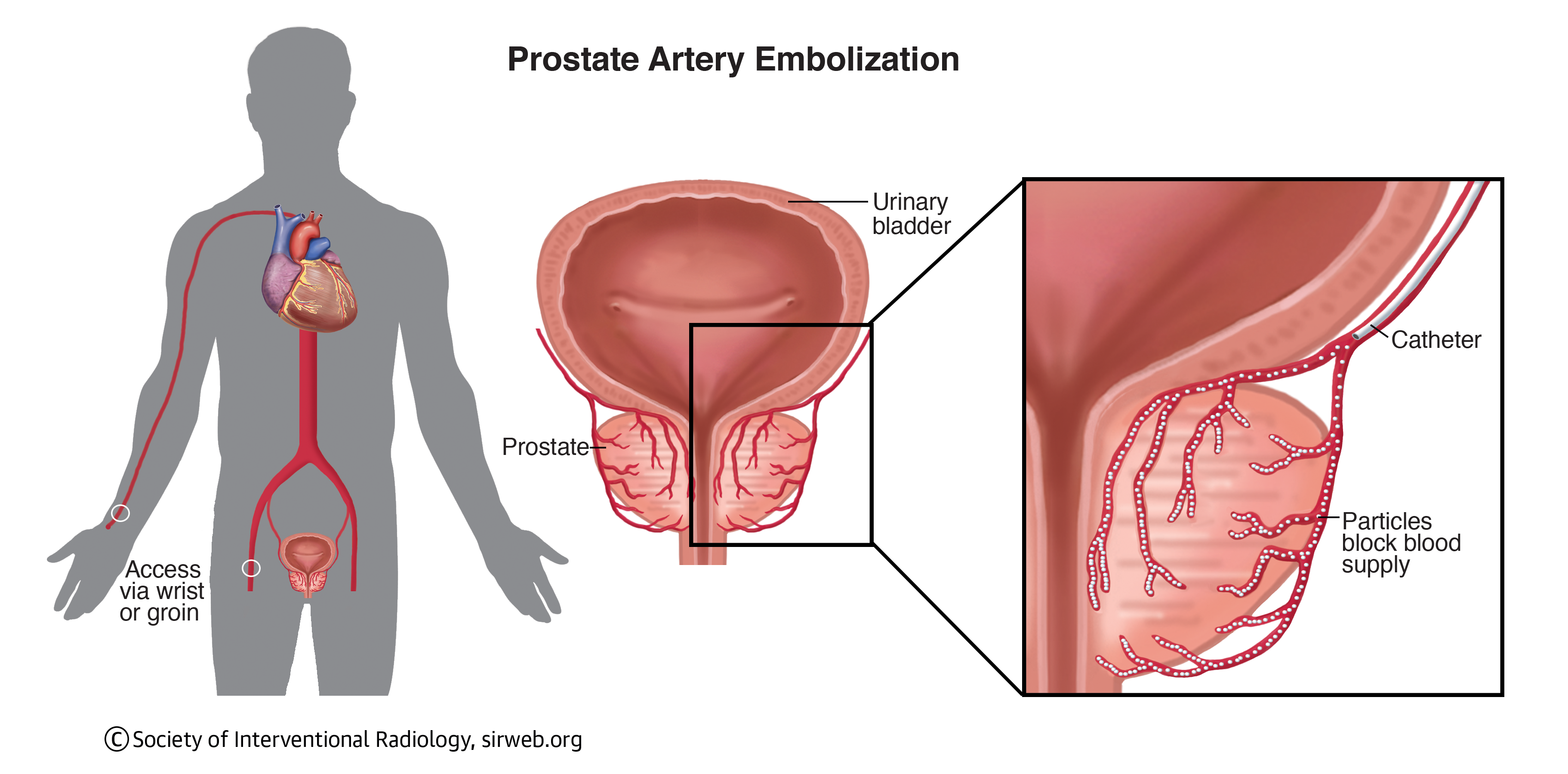For patients
Enlarged prostate
Also called benign prostatic hyperplasia, symptoms of an enlarged prostate can disrupt your life. An IR can help.

Signs and symptoms
What is benign prostatic hyperplasia (BPH)?
Enlarged prostate, or benign prostatic hyperplasia (BPH), symptoms affect approximately 50% of men in their 50s and as many as 90% in their 70s and 80s. As the prostate gland grows, it can slow or stop the flow of urine from the bladder—also called bladder outflow obstruction. If you have an enlarged prostate with bladder outflow obstruction, this is categorized as lower urinary tract symptoms (LUTS).
What are the symptoms of BPH?
- Frequent urination
- Urgency to urinate
- Poor urine stream
- Incomplete emptying of the bladder
Your doctor will diagnose an enlarged prostate after a detailed exam to rule out other possible causes of LUTS and by reviewing the results of laboratory tests. If your symptoms are due to an enlarged prostate, a minimally invasive treatment called prostate artery embolization may help.
How do IRs treat BPH?
Prostate artery embolization
While there are other treatments for enlarged prostate, there are many interventional radiologists who can provide an innovative treatment called prostate artery embolization (PAE) to reduce the size of the prostate and relieve bothersome lower urinary tract symptoms. PAE is a minimally invasive treatment that has less risk, less pain and less recovery time than traditional surgery. It also doesn't carry the risk of sexual side effects typically associated with invasive surgeries.
Through image guidance, an interventional radiologist makes a tiny incision in either the groin or the wrist to insert a small, thin tube called a catheter into an artery and directs it to the blood vessels of the prostate. Once there, the IR blocks the blood flow to specific areas of the prostate, depriving those prostate cells of oxygen and resulting in the gland’s shrinkage.

Follow-up and recovery
What is the treatment’s recovery like?
Men who have undergone PAE have reported high satisfaction, no urinary incontinence or sexual side effects. The only external sign that they underwent treatment is a small puncture mark on the groin or wrist. Minor side effects, most of which resolve on their own, include frequent and/or difficult urination, pelvic pain, blood in the urine, blood in the stool, and diarrhea.
What are the risks of prostate artery embolization?
PAE is a safe and effective treatment option for appropriately selected patients, particularly those who cannot tolerate surgery or have failed other medical therapy:
- Older patients with multiple conditions
- Patients with very large prostates
- Patients with bleeding from the prostate or with long-term bladder catheters
- Patients who cannot stop anticoagulation therapies
- Patients who desire to preserve sexual function
How does PAE compare to other treatments?
More than 20 studies including over 2,000 patients with moderate to severe LUTS due to BPH show that PAE has shorter recovery and fewer complications than traditional surgery and improves symptoms and quality of life to a greater degree than medical therapy.
Read the Society of Interventional Radiology's multisociety position statement about the safety and efficacy of PAE.
PAE is also recommended in the American Urological Association treatment guidelines for enlarged prostate.
Use SIR's Doctor Finder to search for interventional radiologists in the United States and abroad.
Reviewed by Andrew J. Gunn, MD, FSIR, September 2024.